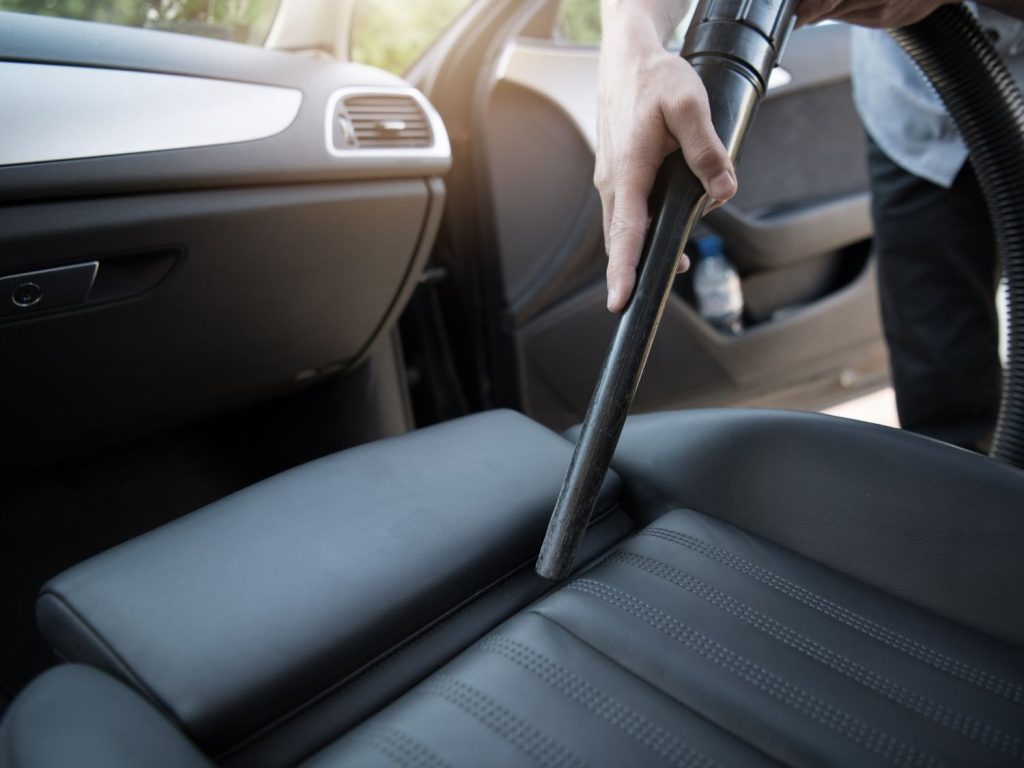Why a Careful Check Matters
Buying a used car can be tricky. It’s like flipping through someone else’s diary, the odometer tells part of the story, but the real history hides in the details. One car might look spotless on the outside yet hide costly engine troubles, while another with higher mileage could have been maintained meticulously and still run like new.
A thorough check saves you money and headaches down the road. You avoid hidden repairs, protect yourself from scams, and make sure you don’t end up with a vehicle that spends more time in the repair shop than on the road. In places like Willowick Forest, where commuters rely on dependable cars, a good inspection is more than just smart, it’s essential for safety and financial peace of mind.
Quick Checklist Before You Start Shopping
Before even setting foot on a seller’s driveway or a used car lot, have a solid game plan. Here’s a quick mental toolkit:
- Budget and total cost of ownership: Don’t just look at the price tag. Consider insurance, taxes, maintenance, and fuel.
- Paperwork preparedness: Make sure the seller can produce a clean title and service history.
- Deal-breakers: Know your “no-go” signs like salvage titles, flood damage, or hidden liens.
- Inspection plan: Decide if you’ll bring a mechanic, use a service like Texas First Auto Inspections, or handle the first round yourself.
- Test drive route: Map out a mix of city and highway driving to fully gauge performance.
This pre-checklist helps you weed out bad options before wasting time.

Set a Realistic Budget and Total Cost of Ownership
Too many buyers fall for the trap of judging cars solely by price. But the true cost includes:
- Purchase price: The sticker amount you’ll pay upfront.
- Immediate repairs: Tires, brakes, fluids, or timing belt jobs.
- Routine maintenance: Oil changes, inspections, filters, and minor replacements.
- Insurance: Get quotes before committing. Some models cost more to insure.
- Taxes and registration: Vary by state and can add hundreds to the initial cost.
Imagine two cars: one selling for $1,000 less but needing $1,500 worth of repairs right away. Suddenly, the “cheaper” car becomes more expensive. Always crunch these numbers before making an offer.
Gather Must-Have Paperwork Early
Paperwork tells you if the car’s story adds up. Don’t wait until you’re ready to pay, ask for documents upfront:
- Title: Should be clean, free of liens, and match the VIN.
- Service records: Oil change logs, brake replacements, timing belt jobs.
- Registration and inspection certificates: Verify they’re current.
- Warranty or recall documents: Check if coverage transfers.
If a seller dodges these requests or says “I lost the paperwork,” that’s often a red flag. Well-kept records usually mean a well-kept car.
Inspecting the Car in Person: The Big-Picture Approach
Your eyes and ears can uncover more than you think. Approach the car like a detective:
- Look for inconsistencies: Mismatched paint, uneven panel gaps, or new parts on an otherwise aged vehicle.
- Listen carefully: Sellers who avoid questions about accidents or repairs might be hiding something.
- Smell the cabin: Air fresheners can mask smoke, mildew, or flood odors.
Take your time. The more thorough your first impression, the better your decision.
Exterior Inspection
Paint, Bodywork, and Signs of Repair
Step back and look at the car in sunlight. Do panels match in color and shine? Mismatched paint often means past accidents. Feel for rough textures around seams, that can indicate filler or bodywork. Light scratches are normal, but big repairs should come with receipts.
Frame, Alignment Signs, and Structural Red Flags
Frame damage is a deal-breaker. Look for crooked doors, uneven trunk alignment, or hood gaps. Check under the vehicle for welded areas or bent metal. If you spot signs of major repair, think twice, frame issues compromise safety and resale value.
Tires, Wheels, and Undercarriage
Tires tell their own story. Uneven tread wear usually means alignment or suspension problems. Inspect rims for cracks or curb rash. Peek underneath for leaks, corrosion, or damaged suspension components. Surface rust is common, but deep rust near fuel lines or frame mounts spells trouble.
Interior Inspection
Seats, Belts, Upholstery, and Odors
Sit inside. Does it smell fresh, or is there a musty odor? Damp carpets hint at leaks or flood damage. Worn seats show how the car was used. Always test seatbelts for smooth retraction and secure buckling.
Electronics, HVAC, and Safety Features
Power everything on. Test air conditioning, heater, windows, radio, and dashboard lights. Watch the instrument cluster: warning lights should blink briefly at startup, then go out. If the airbag light stays on, that could mean hidden safety issues.

Mechanical and Under-the-Hood Checks
Engine Performance and Fluids
Open the hood. Look for leaks, cracked hoses, or worn belts. Check oil color with the dipstick, dark oil is normal, milky oil is not. Coolant should be clean, not rusty or oily. Start the engine: does it idle smoothly, or does it rattle?
Transmission and Drivetrain Checks
In automatics, shifts should feel smooth. Manuals should engage without grinding. Test reverse gear carefully, a slipping reverse can signal transmission wear. For all-wheel-drive cars, ask how often the system was serviced.
Suspension and Brakes
Push down on each corner of the car, it should bounce once then settle. On the road, brakes should feel strong and steady without vibration. A squeal or pull to one side means it’s time for service.
Test Drive Strategy: What to Look For on the Road
The test drive is where the car reveals its secrets.
Short-Town Drive Checklist
Start with local roads. Pay attention to steering response, brake feel, and how smoothly the car accelerates. Make tight turns in a parking lot, do you hear clunks or grinding?
Highway and Load Testing
On the highway, test acceleration, lane changes, and cruising comfort. Listen for wind noise around doors and windows. Any vibration in the steering wheel at speed points toward tire or alignment issues.
Vehicle History Reports: How to Read Them
What a VIN Report Reveals
A VIN check shows mileage history, accident records, recalls, and past ownership. It’s like a background check for cars.
Red Flags in Reports to Take Seriously
- Salvage or rebuilt titles
- Flood or fire damage
- Odometer rollbacks
- Multiple accidents in a short period
One or two owners with full service history is usually a good sign.
Price Evaluation and Negotiation Tactics
Use Comparable Listings to Set a Fair Price
Research online listings around Willowick Forest. Compare mileage, condition, and trim levels. Showing a seller similar cars at lower prices gives you leverage.
Calculating Repair and Maintenance Adjustments
If a car needs $800 in tires and $600 in brakes, subtract that from your offer. Sellers are often willing to lower the price when presented with clear, factual repair costs.
When to Walk Away
Not every car is worth saving. Walk away if:
- The seller can’t produce a clean title.
- The vehicle has major frame damage.
- The inspection shows severe engine or transmission issues.
- The seller pressures you into rushing the deal.
Walking away costs nothing, buying the wrong car can cost thousands.
Texas First Auto Inspections: Why a Pro Check Pays Off
Even if you know a lot about cars, a professional inspection adds another layer of protection. Companies like Texas First Auto Inspections in Willowick Forest offer comprehensive reports that cover the details you might miss.
They’ll check diagnostic codes, measure brake wear, inspect for hidden leaks, and give a prioritized repair list. The cost of an inspection is small compared to the price of a blown engine or failed transmission. Think of it as buying peace of mind.
Paperwork and Local Considerations in Willowick Forest
In Texas, ensure you have:
- A signed and lien-free title.
- A bill of sale with VIN, price, and both signatures.
- Proof of insurance before registration.
- A valid inspection sticker (if required).
Local offices can guide you through taxes and transfer fees. Skipping steps here can delay registration or even void your purchase.
Final Purchase Checklist
Before handing over money, confirm:
- VIN matches across title, car, and reports.
- Vehicle history shows no hidden red flags.
- Professional inspection report (or signed waiver).
- Test drive covers both city and highway.
- Price reflects actual condition and repair needs.
- Title, bill of sale, and insurance are secured.
Texas First Auto Inspections Serving the Willowick Forest Community and Beyond in Houston
Texas First Auto Inspections is dedicated to serving the diverse needs of the local community of Houston, including individuals residing in neighborhoods like Willowick Forest. With its convenient location near landmarks such as the Harris County MUD 24 WP3 and major intersections like Regency Park & Stuebner Airline Rd. (coordinates: 30.03661,-95.53724), we offer best car inspection service Houston services.
Get Best Car Inspection Services at Willowick Forest Now
Navigate from Willowick Forest to Texas First Auto Inspections Now
Smart Decisions Lead to Better Rides
Finding the right used car takes patience, research, and a methodical eye. Don’t get swept away by shiny paint or persuasive sellers. Inspect carefully, check paperwork, read reports, and always test drive thoroughly.
When in doubt, lean on experts like Texas First Auto Inspections in Willowick Forest to back up your instincts. A smart buyer walks away with more than just a car, they leave with confidence.
FAQs
1. How long should I test drive a used car?
At least 20–30 minutes with both city and highway driving included.
2. Can a car with high mileage still be a good deal?
Yes, if it was well-maintained and priced fairly. Service history is key.
3. Should I trust a seller without service records?
Approach with caution. Lack of records makes it harder to verify care.
4. How much does a pre-purchase inspection cost?
Usually $150–$300 depending on depth, but it’s worth the investment.
5. Is a salvage title always bad?
Not always, but it reduces value and can hide long-term issues. Proceed only with thorough inspection.







